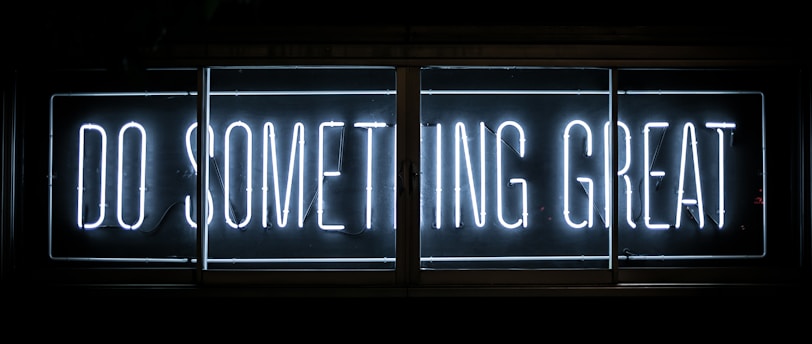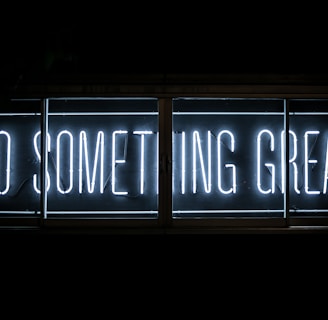How to Use Journaling for Creative Inspiration: Unlock Your Inner Artist
Journaling is not just for personal reflection—it can also be a powerful tool for unlocking your creativity. This blog explores how to use journaling to spark creative inspiration, overcome creative blocks, and develop your unique artistic voice. Whether you’re a writer, artist, or simply someone looking to tap into your creative potential, this guide will help you use journaling to fuel your imagination.
8/12/20245 min read


Creativity is often seen as something mysterious and elusive, a spark that comes and goes without warning. But what if you could cultivate that spark more consistently? Journaling, a practice typically associated with self-reflection and personal growth, can also be a powerful tool for nurturing and unlocking your creativity.
Whether you’re a writer, artist, musician, or someone who simply enjoys creative expression, journaling can help you tap into your inner well of inspiration. It provides a space to explore ideas, play with concepts, and overcome the creative blocks that inevitably arise.
In this blog post, we’ll explore how to use journaling to spark creative inspiration. We’ll cover techniques, prompts, and tips to help you develop a journaling practice that fuels your creativity and helps you access your unique artistic voice.
1. The Power of Journaling for Creativity
Journaling has long been used as a tool for self-discovery, but its potential for boosting creativity is often overlooked. Here’s why journaling is so effective for nurturing creativity:
Freedom to Explore: A journal is a private space where you can explore ideas without judgment. This freedom allows you to take risks, experiment, and think outside the box—key components of the creative process.
Overcoming Blocks: Writing down your thoughts and frustrations can help you work through creative blocks. By externalizing your challenges, you can gain perspective and find new ways to move forward.
Idea Generation: Journaling can be a wellspring of ideas. Whether you’re jotting down random thoughts, brainstorming, or sketching, your journal becomes a repository of creative concepts that you can draw from later.
Mindfulness and Focus: The act of journaling encourages mindfulness, helping you stay present and focused on your creative work. This focus can lead to deeper insights and more meaningful creative expressions.
Tracking Progress: Journaling allows you to document your creative journey, track your progress, and reflect on how your ideas evolve over time. This can be incredibly motivating and inspiring as you see your growth.
2. Techniques for Using Journaling to Spark Creativity
There are many journaling techniques that can help you tap into your creative potential. Here are a few to consider:
Morning Pages
Morning Pages, a concept popularized by Julia Cameron in The Artist’s Way, involves writing three pages of stream-of-consciousness first thing in the morning. The idea is to clear your mind of clutter and allow your creativity to flow freely. Because Morning Pages are done in longhand and without judgment, they help you bypass your inner critic and access your subconscious mind.
Try incorporating Morning Pages into your daily routine as a way to start your day with creative intention. Write about anything that comes to mind—your dreams, worries, random thoughts, or ideas. Don’t censor yourself; just let the words flow.
Visual Journaling
If you’re more visually inclined, consider keeping a visual journal where you combine words with sketches, doodles, or collages. This technique allows you to express yourself in a more dynamic way and can be particularly helpful for artists who want to explore ideas through both imagery and text.
Your visual journal can be a place to experiment with different art styles, capture ideas for future projects, or simply play with color and form. The key is to keep it loose and spontaneous—don’t worry about creating “finished” pieces. Instead, let your journal be a playground for your creativity.
Brainstorming Sessions
Use your journal as a space for brainstorming creative ideas. Set a timer for 10-15 minutes and write down as many ideas as you can on a particular topic or project. Don’t worry about whether the ideas are good or bad—just focus on generating as many as possible.
Once the timer goes off, review your list and see which ideas stand out. You might find that one idea sparks another, leading to a chain of creative thoughts. This technique is particularly useful for overcoming creative blocks or when you’re in need of fresh inspiration.
Prompts and Challenges
Journaling prompts can be a great way to kickstart your creativity. Prompts are open-ended questions or statements designed to inspire creative thinking. For example, a prompt might ask you to imagine a conversation between two characters in a story, or to describe a scene using all five senses.
You can also set yourself creative challenges in your journal. For instance, you might challenge yourself to write a short story in 10 minutes, draw something without lifting your pen, or create a collage using only magazine clippings. These challenges push you to think creatively and step outside your comfort zone.
Mind Mapping
Mind mapping is a visual brainstorming technique that involves writing a central idea in the middle of the page and then branching out with related ideas, concepts, or themes. This technique helps you see connections between different ideas and can lead to unexpected insights.
Mind mapping is particularly useful when you’re trying to develop a complex project, such as a novel, art series, or business plan. It allows you to explore different aspects of your idea and see how they fit together.
3. Creative Journaling Prompts to Try
If you’re looking for inspiration, try these creative journaling prompts:
What if? Start a page with the question “What if?” and brainstorm as many ideas as you can. For example, “What if animals could talk?” or “What if time travel was possible?” Let your imagination run wild.
Describe Your Dream Project: Write about your ultimate creative project without worrying about limitations like time, money, or resources. What would you create if anything was possible?
Rewrite a Scene: Take a scene from a book, movie, or even your own life, and rewrite it with a different outcome. How does this change the story?
Character Creation: Create a new character by writing about their background, personality, and motivations. Then, imagine how they might interact with other characters in a story.
Artistic Interpretation: Choose a piece of music, artwork, or poetry and write about how it makes you feel. Alternatively, create your own artistic response to it in your journal.
Five Senses: Describe a scene using all five senses. What do you see, hear, smell, taste, and touch? This exercise helps you bring more sensory detail into your creative work.
List Your Inspirations: Make a list of everything that inspires you, from artists and writers to places, colors, and experiences. Reflect on how these influences shape your creative voice.
4. Tips for Maintaining a Creative Journaling Practice
To get the most out of creative journaling, it’s important to make it a regular part of your routine. Here are some tips to help you stay consistent:
Schedule Time: Set aside dedicated time for journaling, whether it’s in the morning, during lunch, or before bed. Consistency helps build momentum and keeps your creativity flowing.
Create a Ritual: Pair your journaling with other activities that help you get into a creative mindset, such as listening to music, lighting a candle, or sitting in a favorite spot.
Stay Open-Minded: Don’t judge your journal entries—let them be messy, experimental, and imperfect. The goal is to explore and play, not to create finished work.
Mix It Up: If you feel stuck, try changing your journaling approach. Switch from writing to sketching, use different prompts, or experiment with new materials. Keeping your practice varied can keep things fresh and exciting.
Reflect on Progress: Periodically review your journal to see how your ideas and creative voice have evolved. This reflection can be inspiring and help you identify themes or patterns in your work.
Final Thoughts
Journaling is a powerful tool for unlocking your creativity, helping you explore new ideas, overcome creative blocks, and develop your unique artistic voice. Whether you’re writing, drawing, or brainstorming, your journal can be a space where your imagination is free to roam.
Remember, there’s no right or wrong way to journal—the key is to make it a practice that feels inspiring and supportive for you. So, grab your journal, let go of expectations, and start exploring the limitless possibilities of your creativity.
Your next great idea might just be a page away.
Tags:
Creative journaling
Start journaling
Unlock creativity
Artistic inspiration
Overcoming creative blocks
Journaling techniques for creativity
Morning Pages
Visual journaling
Brainstorming ideas
Creative writing prompts
